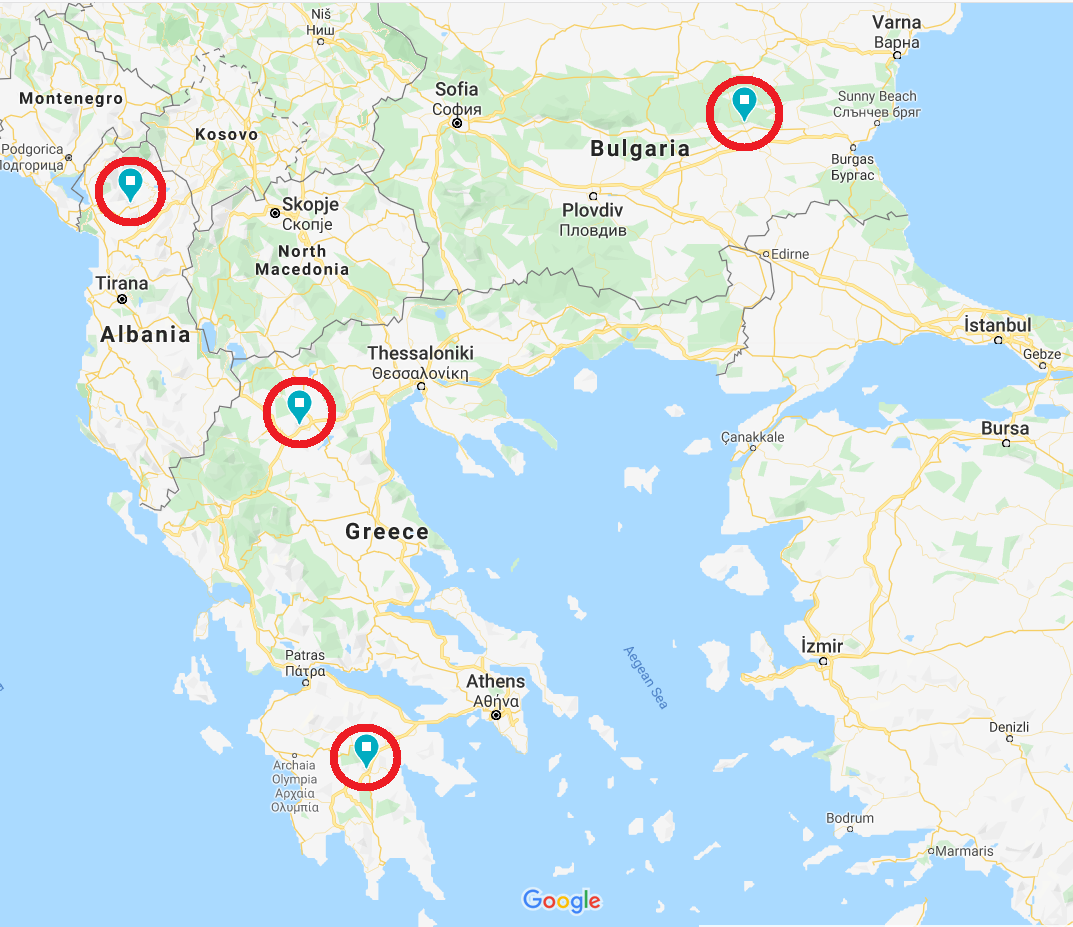We have known for some time that a man from West Macedonia, Greece and a man from Sliven, Bulgaria are each others closest relatives within the J-Z1043 lineage of J-L283. Until now it was not clear which other men within J-Z1043 were their next closest relatives.
While they differ on a whopping 11/67 STR alleles, they share DYS459=8-10 and DYS464=13-14-15-18. While DYS464 has a high mutation rate, DYS459 is more stable, and this particular allele is very rare in J-Z1043. On this basis the two men had been grouped together in the J-M241 Haplogroup Research Project for several years.
These men also share DYS385a=10. This haplotype is very rare in J-L283 and has only been found among some lineages of J-Z1043. Recently it was discovered that the SNP FGC55778 is correlated with this STR mutation.
So now we know that men in the four lineages of FGC55778 are these mens' closest male line relatives.
The Quest for the Relatives of Peloponnesian with an Unusual DYS464 Allele
Because of the recent discovery of J-FGC55778 I have reanalyzed all men with DYS385a=10 in an attempt to discover clusters of related men on the basis of sharing rare STR alleles.
I found a promising lead in a man tracing male descent to Tripoli, Greece, a city that is the current capital of the Peloponnese region. He has a DYS464 allele of 15-15-17-17, very rare among men predicted to be J-FGC55778.
Because a cluster of men from around Altenburg, Germany have a very similar allele, I tested him for their child lineage, J-BY177422, using the J-Z1043 Research Fund, which aims to test people to help answer the questions of, "Where was the J-Z1043 ancestor living around 800 BC? and How did he come to sire so many lineages that are so dispersed around Europe today?"
This man ended up negative for the lineage. So it was back to the drawing board.
After discussing with geneticist Thomas Krahn, he pointed out to me that a single mutation event known as a RecLOH can change the alleles DYS459, DYS464 and CDY. When this happens, alleles from one side of the palindrome get written over the allele on the other side, resulting in pairs of identical alleles across all three STRs.
Quick overview about RecLOH in this wikipedia article. But check out the source, Thomas Krahn (YSEQ).


It is possible that the common ancestor of the Bulgarian and West Macedonian may have given rise to the Peloponnesian's DYS459 and DYS464 by two mutations:
- DYS464 of 13-14-15-18 to 13-14-15-17
- RecLOH changing DYS459 from 8-10 to 8-8 and DYS464 from 13-14-15-17 to 15-15-17-17
It appears that CDY was either not much affected by this RecLOH or else it rapidly diverged.
It should be noted such a RecLOH as described above could also transform almost any other DYS459/DYS464 haplotype within J-FGC55778 to the Peloponnesian's alleles. However, in this case the compelling reason for grouping these men together is their sharing alleles, in order of decreasing rarity, DYS460=12, DYS447=27, and DYS576=17.
So understanding RecLOH can help you avoid the pitfall of grouping men together on the basis of what appears to be a set of rare values, which can actually be arrived at from a single mutation event from a variety of starting haplotypes. In this case, look to other shared rare alleles to reveal the true common origin.
The Missing Ingredient? One Part North Albanian

A man tracing descent to Puka in Northern Albania shares the same rare DYS464 as the Bulgarian and West Macedonian and the alleles shared by their hypothetical common ancestor with the Peloponnesian, DYS447=27 and DYS576=17.
So I think it's plausible that this Albanian man may also be part of the cluster. The rare DYS460=12 allele may imply more recent common descent between the two men tracing descent to Greece. If so, then the North Albanian would have split first from the common ancestor of the others first, having not underwent the mutation to DYS459=8-10.
NGS tests for these men could establish one of the first ancient, geographically consistent lineages within J-Z1043, strengthening the theory that the J-Z1043 ancestor himself was living in the Balkans. If you would like to contribute to this research by helping to fund these tests, then please consider donating to the J-Z1043 Research Fund.
Thank you for this update
In Serbian Dna project, i have seen a man from the South Banat district that has J-FGC55778, hope this helps
So it is documented in the historical record that beginning in the 14th century, Albanian mercenaries were given land by the Byzantine Emperor to settle the Peloponesse. This communities of ALbanian speakers would called Arvanites. This would make sense on a late arrival of J2b2 into the Peloponnese.